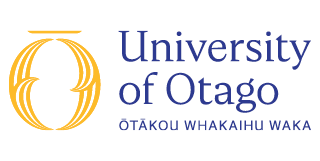General introduction
For a general introduction to
- IPE Short Video
IPE Brochure (PDF, electronic edition revised April 2023)
The brochure can also be found in hard copy (2020 edition) from the
IPE conceptual model at Otago
![]()
The
IPE in the Health Sciences Division: A Concept Paper (April 2017) (PDF)IPE Conceptual Model, revised 2020 (PDF)
The conceptual model incorporates these core ideas (for details, see IPE Conceptual Model 2020):
- IPE in health professional programmes prepares students for person-centred health care.
- By learning with, from and about each other, students progressively acquire IPE competencies in six specified domains.
- Capabilities developed through IPE are applied, demonstrated and consolidated in clinical workplaces.
- Health and education systems share contextual drivers and priorities, and respond through strategies, innovations and partnerships.
IPE Quality Framework
![]()
The
- IPE Quality Framework Summary (PDF)
- IPE Quality Framework Full Report (PDF)
- IPE Quality Framework Statement of Policy Recommendations (PDF)
Key components of the Framework are (for details, see documents listed above):
- The IPE Centre implements the IPE vision, strategy and Quality Framework.
- A common language for IPE and interprofessional collaborative practice (IPCP) builds common understanding.
- An integrated longitudinal IPE curriculum progressively builds IPE competence to meet learning and regulatory requirements.
- Selected IPE competency domains form the basis of assessment in IPE learning activities.
- Students accumulate IPE credits which are captured for their permanent academic record.
Student IPE journey
- Student IPE Journey (Summary) (PDF, electronic edition revised April 2023)
The students
- Otago health professional students currently have
IPE opportunities after completing the Health Sciences First Year which precedes their health professional programme, e.g. Dentistry, Medical Laboratory Science, Medicine, Pharmacy, Physiotherapy. - Some Otago students have
IPE opportunities from their first year of study, either at undergraduate (e.g. Oral Health, Radiation Therapy) or postgraduate-entry level (e.g. Dietetics, Nursing). - It benefits Otago students to learn interprofessionally with, from and about health/social care professional students from other disciplines in programmes offered by partner institutions around the country, e.g. Nursing, Occupational Therapy, Paramedicine, Social Services, Social Work, Speech Language Therapy.
The IPE journey
Otago students' interprofessional learning progresses through the course of their degree in activities at three levels of learning:
- Exposure – an
IPE learning activity that is case-based or problem-based, but does not need to involve patients/clients either simulated or actual. - Engagement – an
IPE learning activity that involves patients/clients either simulated or actual, but not in a clinical workplace where care is undertaken. - Immersion – an
IPE learning activity that is based in a clinical workplace where students participate in usual care; the term 'complex immersion activity' is used to denote an extended clinically-based rotation/block module.
As the
- Workload hours
- Complexity of interprofessional learning, and
- Expected learning outcomes
By learning with, from and about each other, students progressively acquire IPE competencies in selected, assessed domains. They apply, demonstrate and consolidate these competencies in clinical workplaces pre- and post-registration, thus becoming ready for - and progressing towards mastery of - collaborative practice.
Examples of IPE activities at Otago
At Otago, an
- Involves students from two or more professions (preferably three or more)
- Involves
IPE -trained staff, from two or more professions wherever possible - Includes at least one explicit interprofessional learning outcome – preferably more than one
- Involves interactive learning
- Assesses at least one interprofessional competency domain (see table above).
Please check the following links for more information about selected activities:
IPE Exposure
- IPE Professional Ethics (PDF)
- IPE Collaborative Approaches to managing Long-term Conditions (IPE CALC) (PDF)
IPE Engagement
- IPE Simulations in Dunedin (PDF)
- IPE Discharge Planning (PDF)
- IPE INVOLVE (PDF)
